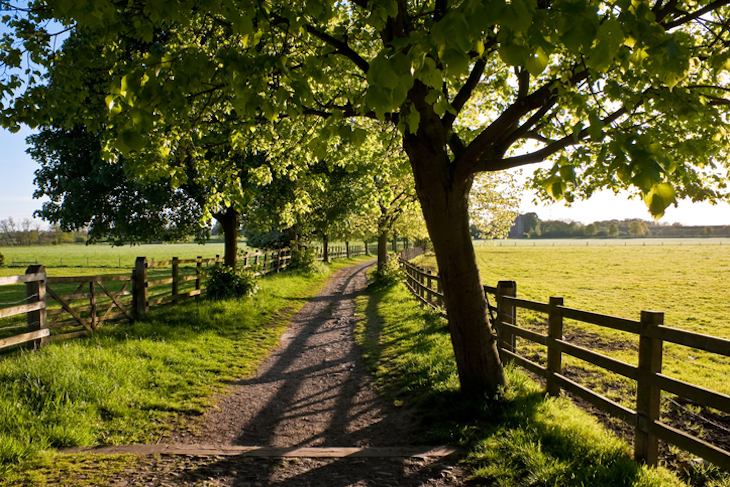Across the fields from the medieval manor house of Toad Hall, and the accompanying 16th-century timber-frame apothecary’s house which Alan Garner dismantled and moved 17 miles to join it in Blackden in rural Cheshire, sits Jodrell Bank Observatory. Here huge telescopes scour the cosmos, seeking radio waves from distant planets and stars.
This juxtaposition between past, present and future, all existing in harmonious symbiosis on land that Garner’s family have lived on for 400 years, seems the perfect metaphor for the creative output of this most singular of English writers.
Garner is a visionary who since 1960 has merged history and place-writing with sci-fi, fantasy, regional dialect and memoir to create work that sits more closely alongside Beowulf or Sir Gawain and the Green Knight than any current contemporaries. There are few living writers who evoke quite the level of devotion across generations of children and adults alike, while somehow happily remaining under the mainstream radar. A 2016 anthology of writings in his honour drew contributions from Margaret Atwood, Stephen Fry, Philip Pullman and Rowan Williams. Yet, publicly at least, Garner is largely unrecognisable.
Other such contradictions define a career built on admirable creative integrity-cum-stubbornness, whether in perception-altering children’s works such as The Owl Service (1967) and Red Shift (1973) or time-straddling adult novels including The Stone Book Quartet (1976-1978), Strandloper (1996) and Thursbitch (2003). Garner is northern, but speaks with a crisp English accent and lives in that part of the north that bleeds into the Midlands, where wealthy Manchester footballers now live. He comes from a long line of skilled labourers, such as stonemasons, yet is an Oxbridge-educated middle-class man of letters. Not for him the safe wage of academia; instead his life’s work exists on a different timescale, his words hewn from rock, lifted from the loam and divined from the Cheshire landscape. In short, he is a mystic and a seer, though one without any of the new-age charlatan connotations that often accompany such epithets.
A series of childhood vignettes that illustrate his development, Where Shall We Run To? is perhaps his most conventional book yet. Born in 1934, Garner’s adolescence is closer to those explored in the works of Thomas Hardy or H.E. Bates, and this memoir is a fond but vital chronicle of the type of village life that doesn’t now exist. The shadow of war defines his often idyllic formative years spent hunting streams for caddisfly larva or exploring the human pain threshold — ‘a scientific question’ — by pushing a lad called Harold into a nettle patch: ‘I’d not heard a boy scream before. It went on. It didn’t stop. It wasn’t Harold.’
Winning a place at Manchester grammar school soon sets him apart from his chums around Alderley Edge, as will his Oxford degree later: ‘I felt something go and not come back,’ he writes. And like many great writers before him, serious childhood illness seems to have elevated Garner’s imagination to feverish levels which have never diminished in the intervening years: lying in a hospital bed he is able to configure pieces of coloured glass in the window above into creatures. Such visions from childhood he would later put to use in fiction. Elsewhere readers will recognise the escarpments, quarries and fissures surrounding Alderley Edge that he later repurposed as fantastical portals and key landmarks in his stories.
Artefacts and people of a bygone England abound: Garner writes of rag rugs, outdoor toilets and new clogs whose wooden soles are greased ‘with lard between the irons to stop the snow from bawking up and twisting my ankles’. Passing gypsies sell carpets, clothes-pegs cut from willow branches and skinned rabbits with their paws left on to show they aren’t cats, and are invited into the garden for cups of tea. Evacuees from London also inhabit the village, while a spinster neighbour lives with scores of cats and cadges offal and scraps from the butchers — ‘the stink wrapped round her and stayed after, as she shuffled along’.
This is a gentle book, delivered like the fireside recollections of a grandparent to a child, and it’s hard not to forgive a writer in their mid-eighties for occasionally succumbing to the wistful sense of nostalgia that permeates here, especially as Garner has always been a writer out of step anyway, his prose prone to punching through into new dimensions, via narratives measured by millennia and centuries rather than minutes and seconds.
His message isn’t that life was better then, merely different. The same could be said of Garner himself: he has remained consistently himself, a unique and wizardly voice whose territory is marked not by boundaries but by words spiralling in all directions, and that should be treasured.
Got something to add? Join the discussion and comment below.
Get 10 issues for just $10
Subscribe to The Spectator Australia today for the next 10 magazine issues, plus full online access, for just $10.
You might disagree with half of it, but you’ll enjoy reading all of it. Try your first month for free, then just $2 a week for the remainder of your first year.




![The proud, lonely queen dressed up in Garter ribbon and diamonds for dinner at Sandringham every night, even when alone with the king [Getty Images]](https://www.spectator.com.au/wp-content/uploads/2018/08/queenmary.jpg?w=620)


![The First Opium War: The East India Company’s Nemesis and other boats destroy the Chinese war junks in Anson Bay, 7 January 1841 [Bridgeman Art Library]](https://www.spectator.com.au/wp-content/uploads/2018/08/opiumwars.jpg?w=620)






Comments
Don't miss out
Join the conversation with other Spectator Australia readers. Subscribe to leave a comment.
SUBSCRIBEAlready a subscriber? Log in